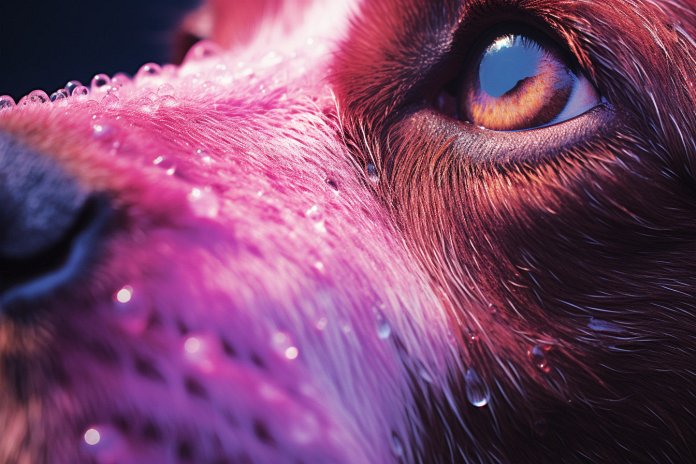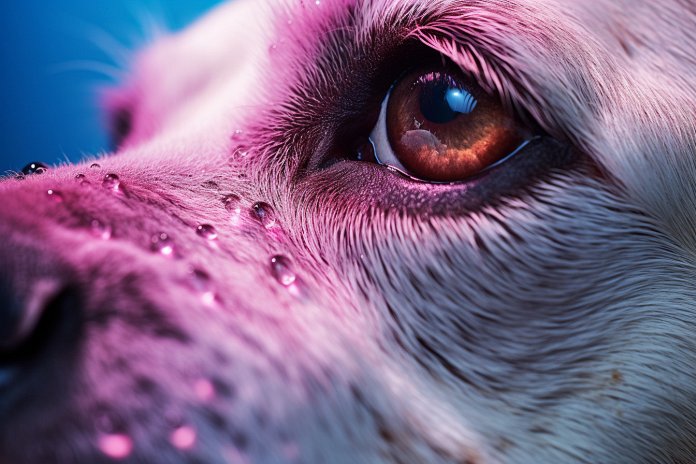
Dogs are known for their ability to detect blood at crime scenes, making them valuable tools in solving crimes. Their highly sensitive sense of smell allows them to pick up even small amounts of blood, making them more effective than man-made devices. Detecting blood can help identify suspects and victims, recreate events, determine murder weapons, and establish connections between individuals and objects or locations.
Signs Dogs Can Smell Blood:
When a dog smells blood, it will sniff or nudge the area, and trained dogs may even sit down to indicate the presence of hidden blood. However, it is important to note that in forensic cases, dogs attempting to lick the area with blood can tamper with evidence.
Body Language:
A dog detecting blood may exhibit signs such as alertness, panting, pacing, and increased sniffing. They may also nudge or nuzzle the area, sit in response to the scent, or go around the perimeter of the area.
History Behind Dogs Smelling Blood:
Dogs and their wolf ancestors historically used blood trails to hunt injured prey. While this instinct has diminished in domesticated dogs, some still possess a natural ability to detect blood. Law enforcement agencies in Europe and Australia have started using blood detection dogs to search potential crime scenes related to missing persons, murders, assaults, or mass disasters.
Science Behind Dogs Smelling Blood:
Forensic odor profiling aims to analyze the chemical aspects of odor. Studies have examined the changes in odor produced by fresh and decomposed blood, with results showing that trained dogs can detect blood up to six months or even twenty-four months old. Furthermore, the location where blood is found can affect its odor profile.
Training a Dog to Smell Blood:
Sniffer or detection dogs are specifically trained to detect substances like blood. Smell is the most important sense used by dogs, and certain breeds may be more effective in detecting blood. Dogs need to be trained to associate the smell of blood with a toy they play with, and they should be exposed to different situations to learn how to sit or lie calmly when they detect a scent. Frolicking, urinating, or digging can destroy potential evidence.
“Unleashing the Power of Canine Detectives: How Dogs Revolutionize Blood Detection in Crime Scenes”

Tips & Things to Know
1️⃣ Dogs can be highly effective in detecting blood at crime scenes due to their natural ability and highly sensitive sense of smell. They can detect even small volumes of blood that may not be visible to the human eye.
2️⃣ When a dog detects blood, it may exhibit signs such as sniffing, nudging or nuzzling the area, sitting in response, and pacing. These behaviors indicate that the dog has detected the scent of blood and can help authorities in further investigating a crime.
3️⃣ Blood detection dogs are trained to associate the smell of blood with a specific toy or object. It is important to train them to remain calm and not disturb the crime scene, as their actions can potentially tamper with evidence. The dog’s breed and personality traits play a role in their effectiveness as blood detection dogs.
Frequently Asked Questions, Answered ✅
1. How do dogs detect blood at a crime scene?
– Dogs have a highly sensitive sense of smell that allows them to sniff out even small volumes of blood. They may nudge or sit down when they detect hidden blood.
2. What are some signs that a dog has detected blood?
– Some signals that a dog has detected blood include alertness, panting, pacing, and sniffing. They may also nudge or nuzzle the area, sit in response, or go around the area’s perimeters.
3. Why are dogs used in blood detection at crime scenes?
– Dogs are preferred over man-made devices as their natural abilities and sensitive sense of smell make them highly effective in locating blood, even in small amounts. Their detection can lead to further investigation by authorities.
4. What is the history behind dogs being able to smell blood?
– Dogs and their wolf ancestors historically used blood trails to hunt injured prey. Although this instinct has become less pronounced in domesticated dogs, some still possess a natural ability to detect blood. Law enforcement agencies in Europe and Australia have started using blood detection dogs for crime scene investigations.
5. How do dogs distinguish odors from fresh and decomposed blood?
– Research has shown that dogs trained on fresh blood can detect blood that is up to six months old, and even locate blood up to twenty-four months old. There is a distinct odor change between fresh blood and decomposed blood, and the location where the blood is found also affects its odor profile.